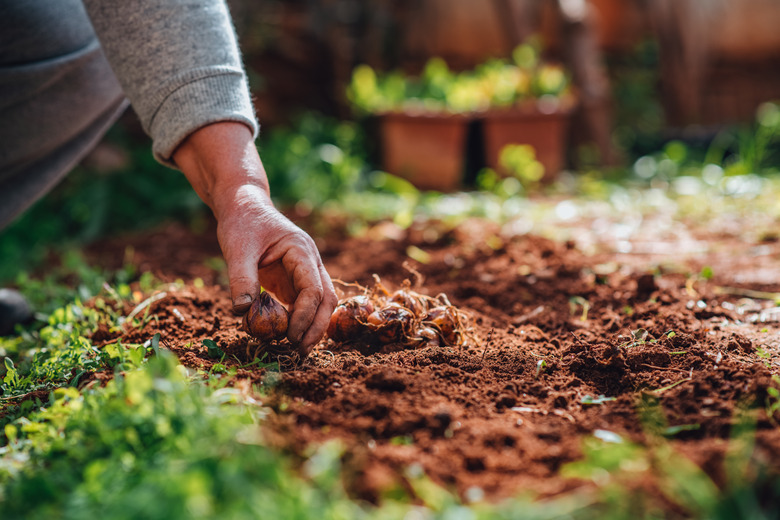The Best Planting Days In Oklahoma
We may receive a commission on purchases made from links.
With its mild winters and extended growing season, Oklahoma's climate can support abundant gardens. Whether you are planting vegetables, fruits or flowers, you can grow it here. The entire state lies in USDA hardiness zones 6 and 7, meaning the lowest temperatures all year range between -10 and 10 degrees Fahrenheit, with the coolest temperatures in the northern part of the state (southern Oklahoma will rarely be below 0 degrees Fahrenheit). The last killing frosts are in late April in zone 6 and mid-May in zone 7, meaning some of the best planting days in Oklahoma start early in the year.
Best Planting Days for Late Winter
Best Planting Days for Late Winter
It might be so cold outside that you're not sure you even want to think about going into the garden, but put on your mittens: hardy garden vegetables can be planted as early as Valentine's Day in southern parts of the state, according to the Oklahoma Cooperative Extension Service. Hardy and semi-hardy plants, which can withstand light frosts and cold temperatures, should be planted between February 15 and March 10, with the earlier dates applying to the warmer south.
This category includes cabbage, carrots, cauliflower, peas, onions, lettuce and potatoes. Beets and broccoli and spring asparagus should be planted in March. These plants will thrive in the spring, when daily temperatures average 70 degrees Fahrenheit or less.
Spring Planting at Its Best
Spring Planting at Its Best
Tender and very tender vegetables, along with annual flowers, should be planted after the last frosts have passed in late April and mid-May. This planting cycle begins around April 10 — or a bit later in the north — when you should be planting tender vegetables such as okra, pepper, pumpkin, eggplant, cucumber, beans, summer squash and even tomatoes, which can withstand any lingering cool weather. You can also plant spring annuals such as petunias, impatiens and snap dragons now.
More fragile vegetables, such as cantaloupe, southern peas, winter squash, sweet potatoes and watermelon, should not be planted until May 1 or as late as mid-June, depending on how far north you are. This is also the time to plant heat-loving annual flowers, such as petunias, zinnias and nasturtium. Fruit trees can also be planted in the spring or fall.
Summer Planting Days
Summer Planting Days
You might be in the middle of harvesting your summer crops, but you should start planting another round of vegetables for a fall harvest. Fall planting starts in mid-July, the ideal time to plant fresh tomato transplants to harvest in the fall, when they often fare far better than in the hot summer months, according to Tulsa Master Gardeners. This is also the time to start planting another round of hardy vegetables to harvest until, and for some plants even after, the first frosts.
You can plant beans, cilantro, sweet corn, cucumber, pumpkins, and summer and winter squash from seeds in mid-July and early August. Young eggplant, pepper and tomatillo plants should be planted around July 15.
Starting Plants in the Fall
Starting Plants in the Fall
The final round of planting days for the year begins in September, when cooler temperatures are ideal for a second round of hardy vegetables. Plant broccoli, brussels sprouts, kohlrabi, turnips and cabbage in early September, and you can eat them well into the fall. Garlic should also be planted in early September for a spring harvest. Spring-blooming bulbs, however, should be planted in mid-October or early-November, just before the frost.
As you engage in your fall planting days, you can also tuck in a few blooming spring annuals, such as pansies or snapdragons, which thrive in cool weather and will perk up your fall garden.
References
- Oklahoma Cooperative Extension Service: Oklahoma Garden Planning Guide
- Oklahoma Cooperative Extension Service: Home Fruit Planting Guide
- National Gardening Association: Timing Spring Bulb Planting in Oklahoma City, OK
- Oklahoma Cooperative Extension: Fall Gardening
- Tulsa Master Gardeners: Gardening Tips for Oklahoma Gardeners
